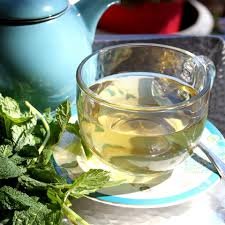Digestive issues like bloating, gas, and indigestion are increasingly common, thanks to fast-paced lifestyles, irregular eating habits, and processed foods. While there are plenty of over-the-counter solutions, many people are turning to natural, holistic remedies. One such option is digestive tea—a soothing herbal blend that supports gut health and provides relief from discomfort.
While store-bought teas are convenient, making your own digestive tea at home allows you to tailor the ingredients to your specific needs and taste preferences. In this guide, we’ll walk you through everything you need to know to create your perfect cup—from understanding herbal properties to crafting personalized blends.
Why Make Your Own Digestive Tea?
Homemade digestive tea gives you complete control over what goes into your cup. You can:
- Customize herbs for your digestive needs (e.g., bloating, slow digestion, or gas).
- Avoid additives, preservatives, or caffeine (if desired).
- Experiment with different flavors and combinations.
- Save money in the long run.
Additionally, the act of preparing and sipping warm tea can itself be calming—a simple, mindful habit that benefits both body and mind.
Key Herbs for Digestive Support
Before you start mixing, it’s important to understand the herbs that form the foundation of effective digestive tea. Here are some of the best herbs and why they work:
1. Ginger (Zingiber officinale)
- Benefits: Stimulates digestion, reduces nausea, and speeds up gastric emptying.
- Flavor: Warm, spicy, and invigorating.
- Best for: General digestion and post-meal discomfort.
2. Peppermint (Mentha piperita)
- Benefits: Relaxes intestinal muscles and eases bloating and gas.
- Flavor: Cool, refreshing, and slightly sweet.
- Best for: Gas relief and soothing cramps.
3. Fennel Seeds (Foeniculum vulgare)
- Benefits: Carminative (helps expel gas), eases indigestion, and reduces bloating.
- Flavor: Sweet, mild licorice taste.
- Best for: Gas relief and digestive balance.
4. Chamomile (Matricaria chamomilla)
- Benefits: Calms the digestive tract, reduces inflammation, and supports sleep.
- Flavor: Floral and mildly sweet.
- Best for: Stress-related digestive issues and nighttime use.
5. Licorice Root (Glycyrrhiza glabra)
- Benefits: Soothes the stomach lining and helps with acid reflux.
- Flavor: Naturally sweet and earthy.
- Best for: Acid control and gut inflammation. Use in moderation.
6. Lemon Balm (Melissa officinalis)
- Benefits: Calms nerves and relieves digestive spasms.
- Flavor: Lightly citrusy and fresh.
- Best for: Nervous stomach and tension-related digestive discomfort.
Crafting Your Custom Digestive Tea Blend
Creating your ideal digestive tea is part art, part science. Follow these steps to design a blend tailored to your digestive needs and taste preferences.
Step 1: Identify Your Goal
Ask yourself what you want your tea to help with:
- Bloating and gas: Choose herbs like peppermint, fennel, and ginger. These make a great gas relief tea.
- Stress-related indigestion: Use calming herbs like chamomile, lemon balm, and licorice root.
- General digestive support: Mix herbs that stimulate digestion (ginger, dandelion) with those that calm (chamomile, fennel).
Step 2: Choose Your Base Herbs
Select 2–3 primary herbs that target your concern. For example:
- Gas relief tea blend: Fennel + peppermint + ginger
- Evening digestive tea: Chamomile + lemon balm + licorice root
Step 3: Add Supporting Herbs (Optional)
Add 1–2 herbs to enhance the flavor or offer secondary benefits. For example:
- Cinnamon adds warmth and helps reduce sugar cravings.
- Orange peel brightens the flavor and supports digestion.
- Cardamom helps with bloating and adds depth.
Step 4: Mix and Store
Use dried herbs for longer shelf life and consistent flavor. Here’s a basic recipe to start:
DIY Gas Relief Tea Blend
- 2 parts fennel seeds
- 2 parts dried peppermint leaves
- 1 part dried ginger root
- ½ part licorice root (optional for sweetness)
Mix all herbs in a bowl and store in an airtight glass jar away from light and heat.
How to Brew Your Digestive Tea
Single Serving Instructions:
- Use 1 to 2 teaspoons of your herbal blend per cup of hot water.
- Steep for 7 to 10 minutes. Cover the cup to retain the volatile oils that make the herbs effective.
- Strain and sip slowly after meals or when digestive discomfort arises.
For stronger effects (especially for gas relief tea), steep for up to 15 minutes or use slightly more herbs.
Tips for Success
- Start small: Test your blend with small batches and adjust ratios based on taste and effectiveness.
- Stay consistent: Drink your tea regularly, especially after meals, for best results.
- Hydration matters: Digestive teas work better when you stay hydrated throughout the day.
- Listen to your body: If a certain herb makes you feel worse or uncomfortable, stop using it.
When to Drink Digestive Tea
- After meals: To support digestion and prevent bloating.
- Before bed: A calming blend can help settle your stomach and promote restful sleep.
- When symptoms arise: Sip a warm cup as soon as you feel discomfort from gas or indigestion.
Final Thoughts
Creating your own digestive tea is an empowering and enjoyable way to take control of your digestive health. By choosing high-quality herbs that suit your specific needs—whether for general gut support or to create an effective gas relief tea—you can experience better digestion naturally and gently.
Start with simple blends, learn how your body responds, and make adjustments over time. Before long, you’ll have a go-to tea that not only tastes great but supports your well-being, one cup at a time.



